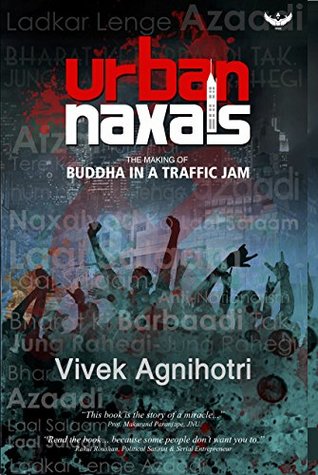More on this book
Community
Kindle Notes & Highlights
Read between
September 27 - October 31, 2018
Niyamat and Valsa were from the minority who were fighting oppression, injustice, and corruption against the marginalized section of society. They were working for the same cause as Naxals. Then why were they killed?
probe indicates that Naxals don't want any development in their area. They don't want the children to be educated, they don't want roads to be built. They want tribals to remain in the dark. And to achieve this perverse end, they can go to any extent of violence, even if it means killing an infant. A four-month-old baby was killed in a Jan Adalat in front of her mother as her father was a suspected police informer. Naxals burn mark sheets and transfer certificates of 10th and 12th students, so that they cannot go for further education and migrate from their villages.
met some students in Nagpur who do not go to their villages and their families come to Nagpur to meet them. Naxals burnt fifteen vehicles of contractors who were building roads as they believe that roads will eventually lead to development. Dalit Patru Durge was killed because he was taking government help to get lift irrigation in his village.
Charu Majumdar or Sitarammaiah or Paddi Shankar.
There are no Zamindars today, so who are they fighting in the tribal areas? Why is it that after four decades of struggle, neither have the rebels achieved their objective nor have the tribals been empowered? Why is the government not being able to stop this oppression? Where do they get money from? Are all those intellectuals who openly support the Naxal movement on national TV, righteous people?
Whenever the Naxal issue pops up, people start discussing the politics behind it. Some are on the side of the oppressors and some on the side of the oppressed. But discussions always remain at the circumference. Very rarely do we talk about the centre. The tribal, who everyone is fighting for.
‘Gar firdaus, zamin asto, ami asto, ami asto, ami asto—if there is a heaven on earth, it's here, it's here, it's here.’
Silver Tips Imperial Tea – the world’s most expensive brand of Darjeeling tea,
‘What is hell after all? When we think of hell we think of suffering… everyone is suffering…. nobody cares… nobody respects…. nobody loves… nobody helps…. You can’t trust anyone… If that’s not hell, then what is it? There are beasts all around to devour you…
Hell is not a place. It’s a state of mind. A fakir walks barefoot in scorching heat, sleeps on a pavement and yet sings a song admiring the beauty of the world.
There is a thirty-three page essay by Arundhati Roy on the issue yet it doesn't smell of the jungles. It smells of her. It stinks of her agenda. Why, I wonder? Why is it that most of the op-eds and essays from the so-called intelligentsia comprising editors, professors, historians, political analysts, social workers, NGO entrepreneurs, humanitarians, and civil society leaders favour the false Naxal
Nehru brought in a socialist vision. He brought in huge dams and public sector heavy industries. The intermediate beneficiaries were these new factory owners who were hand in glove with corrupt officers and maneuvered tenders in their favour. That’s why lots of movies have a reference to some government officer's visit for inspection and how the factory owner would treat him with goodies, women, and wine.
Charu Majumdar laid down four conditions for the aspiring Naxalite. One: Acceptance of Mao Zedong as the leader of the world revolution and his thoughts as the highest form of Marxism-Leninism of that era. Two: Belief in the view that a revolutionary situation existed in every corner of India. Three: Area-wise seizure of power as the only path for taking forward the Indian revolution. Four: Guerilla warfare as the only means of advancing the revolution.
Naxalism as an underground movement has mushroomed across fourteen states, which are recognized as dreaded dens of ‘Naxalite insurgency’. It is spread over Andhra Pradesh, Odisha, Chhattisgarh, Jharkhand, Bihar and West Bengal. To a lesser extent, this trend is also visible in Tamil Nadu, Karnataka, Maharashtra and Uttar Pradesh. It is estimated that Naxalites are active in more than forty percent of India’s geographical area, which is known as ‘Red Corridor’. It is now spreading its tentacles in Punjab, Haryana, Rajasthan and Gujarat. Delhi is emerging as the centre of Urban Naxalism.


